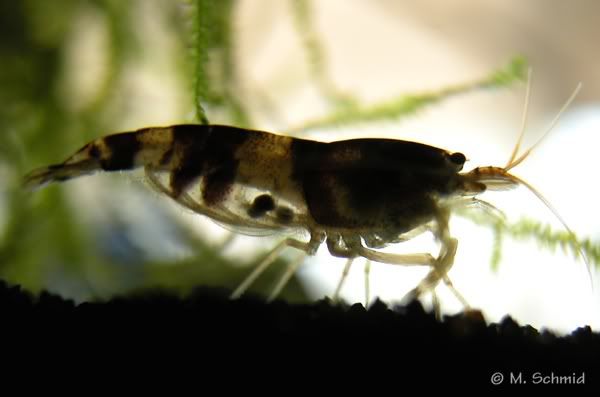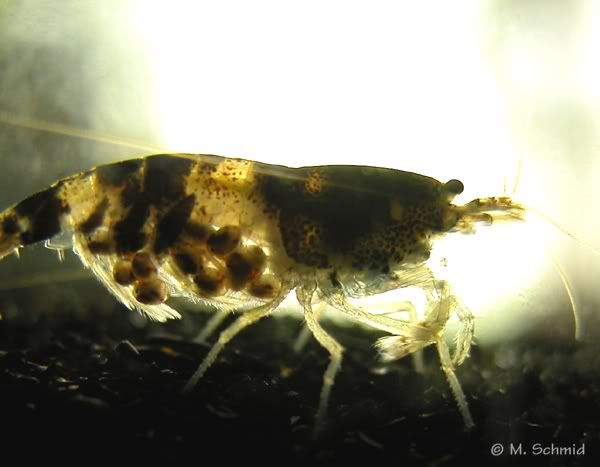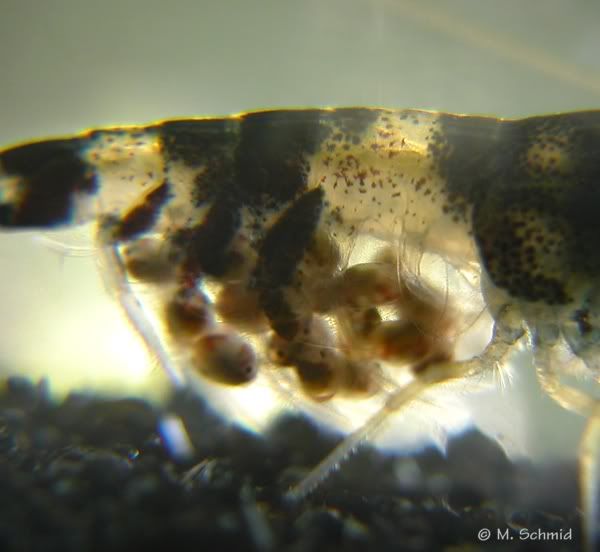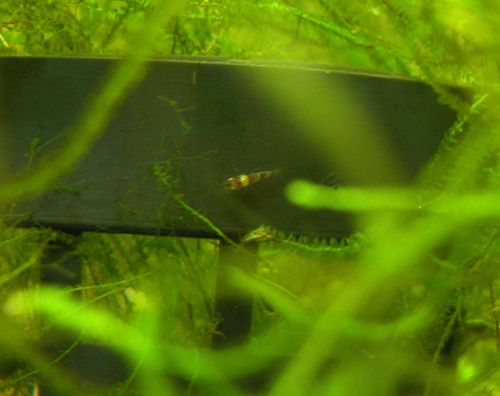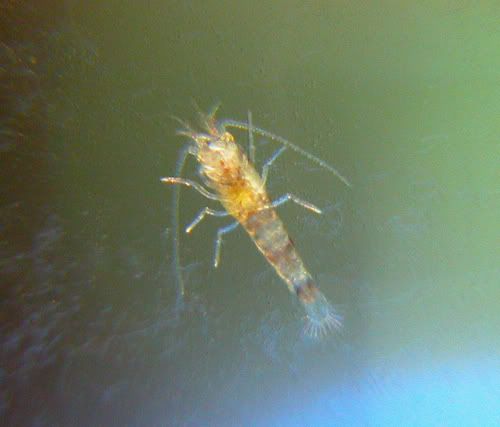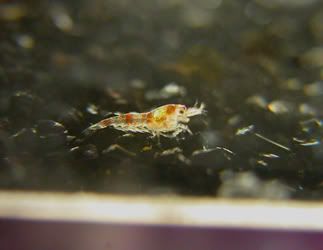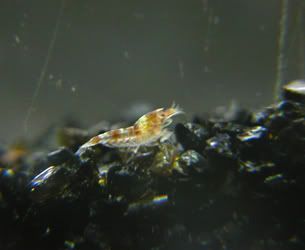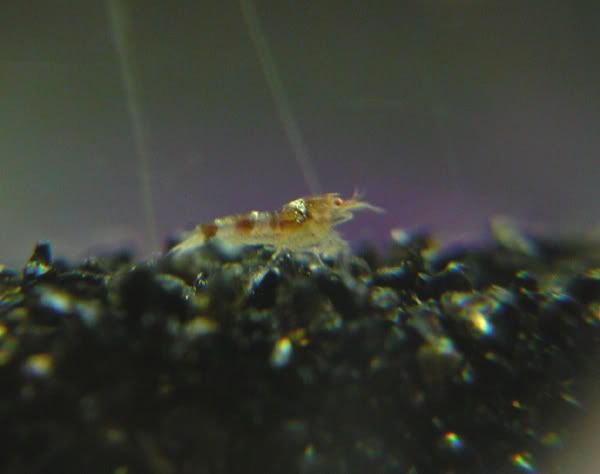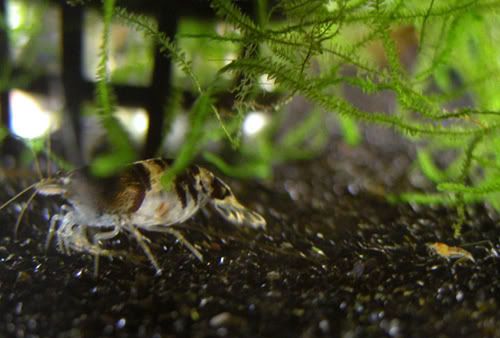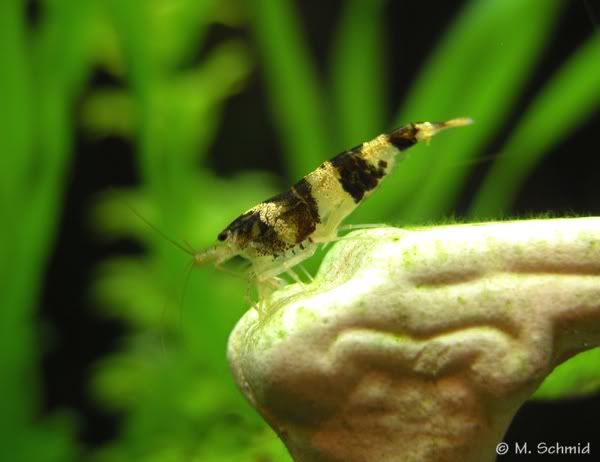Mustafa wrote:It's not all that easy to be your own webmaster, forum administrator, accountant, scientific advisor, photographer, article writer, breeder, packager, shipper etc. all in one.


But I am trying my best to keep things updated.
Hats - where to put them all - sounds like you need an ultra-huge hat rack, Mustafa!

I noticed the useful updates though.

Bo - woohoo, congrats!

I've got some good news too - I too have a pregnant female; she should give birth in about 1.5 weeks. What's really got me smiling is that the one male I was hoping would do the job got it done.
Mustafa, I'm beginnning to seriously think the aforementioned male is a selectively bred cull (as mentioned by Ed) that got thrown in with a shipment of wild caughts. He is the only one that consistently shows the opaque stripes (more yellow than white, which happens to work for me and my preferences) and looks so much brighter than my other adult Bumblebees.
A quick update on the last batch - I only see 4X shrimplets now

Hopefully they will make it to adulthood.
Bumblebee shrimplets at 2 weeks old - not a very clear pic but for once, got more than one shrimplet in the shot - usually they move around too much:
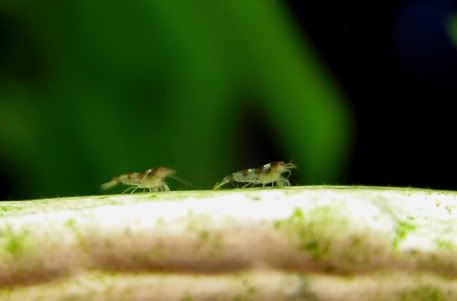
Bumblebee at 6 weeks old:
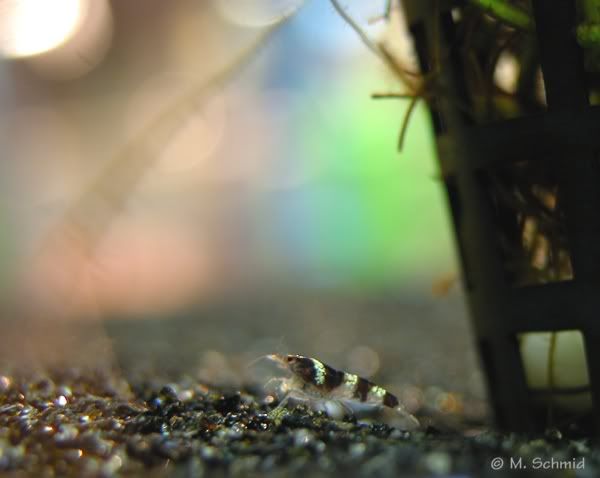
Got some peat granules in hopes my shrimp will do better. Haven't implemented it just yet - was wondering what approach to take - start out slow with a very small scoop in a media bag in the filter or as peat-treated change water? Any pros or cons one way or the other? I'm fanatic about trying to keep things stable and change things only slowly. The challenge is that either way, the water changes will present some differences from the tank - but since I only change 10 - 15%, I'm thinking it shouldn't be too extreme?
I use the same method as Bo in terms of diluting tap water, except using 10% distilled to my change water (I don't have access to RO). My tap comes out at 8.0 pH; the BB tank seems to be around the 7.4 - 7.6 mark nowadays. I'm afraid to increase the distilled water percentage because I don't want my KH to go too low. I know very little about water chemistry but know too low makes water lose its buffering capacity - or am I still not understanding what I'm doing? Is that only pertinent with a lower pH? Do I have more room for leverage ie., can I increase the pure water percentage somewhat?
Currently:
7.4 - 7.6 pH <<<Test done with both strips and drops. As per Mustafa, I don't recommend pH being so high; rather, it's what I got to work with, my tap being so high.
75ppm GH <<<Test done with strips.
80ppm KH <<<Test done with strips.
Mustafa, how are the egg production on yours? Is your colony getting off the ground more smoothly since implementing more of what we know about Bumblebees? For myself, it's been understandably slow going; this round, I only see about 9 - 10 eggs on mine.
-GB


